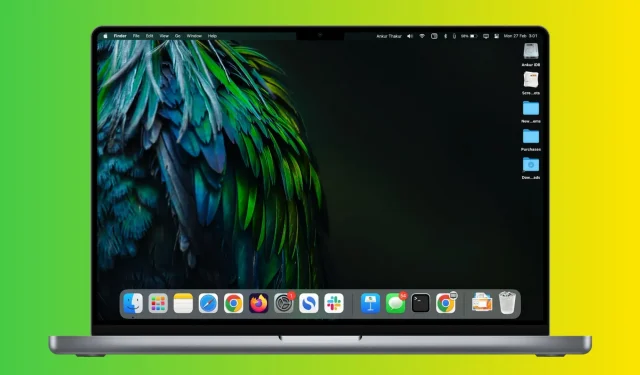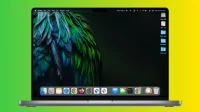Your Mac automatically adjusts the brightness of the screen to ensure a comfortable viewing experience regardless of lighting conditions.
However, you may have encountered situations where your Mac screen dims or brightens in a seemingly random way. This can not only be annoying, but also strain your eyes and make it difficult to concentrate on work.
In this guide, we’ll look at practical solutions to prevent your iMac, MacBook Air, MacBook Pro, or external Apple Studio display from accidentally dimming or accidentally brightening the screen.
Wait a while for the screen to warm up
After booting up your Mac, it may take some time for the display to warm up and slowly reach full brightness. Thus, immediately after turning on your Mac, it is normal to observe a gradual increase or change in screen brightness for a short time.
Clean the ambient light sensor area.
This is the most important decision if your MacBook Air or MacBook Pro randomly changes screen brightness without you touching the brightness key or changing the lighting in your room!
Like the iPhone, iPad, and most other smartphones, your Mac laptop, iMac, and Studio Display are equipped with an ambient light sensor that adjusts the brightness of the display based on the ambient light in the room.
Here is the location of the ambient light sensors on a Mac:
- MacBook, MacBook Air, MacBook Pro, and older iMacs: Next to the top FaceTime webcam
- New iMac with Apple Silicon and Apple Studio Display: Top left screen area (see video)
Since the ambient light sensor is located in the middle of the top bezel of the MacBook, sebum and dust from your fingers can stain this sensor when you open and close the lid. This regularly causes the ambient light sensor to malfunction as it fails to gather light information properly due to a layer of dirt blocking it.
To fix this issue, wipe the ambient light sensor area with a soft cloth and your Mac will no doubt stop changing screen brightness automatically/randomly.
Remove tape, cover or webcam
If you’ve stuck a piece of tape or a privacy cover on your camera, or installed a webcam on your Mac that’s partially blocking the ambient light sensor, remove it to prevent your Mac’s brightness from changing unevenly.
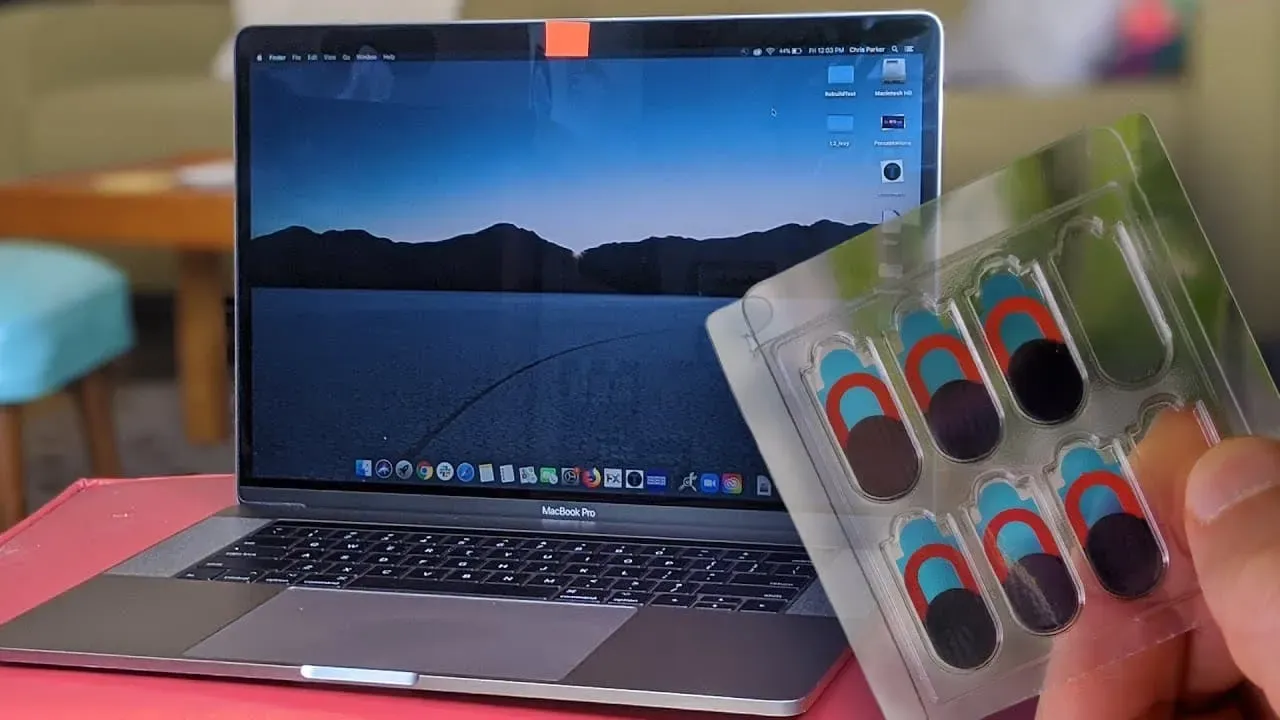
Restart your Mac
It’s also possible that the screen brightness isn’t working due to temporary glitches, and the quickest way to fix this is to restart your Mac from the Apple menu > Restart.
Disable automatic screen brightness
Disabling automatic screen brightness can provide consistency if your work, such as video editing or image color correction, involves using a fixed-brightness screen. It can also help if you’re constantly annoyed that your Mac is dimming the screen to what it thinks is best.
Here’s how to turn off automatic screen brightness on a Mac:
- Click the Apple icon and select System Preferences.
- Select Displays.
- Turn off the Auto Brightness switch.
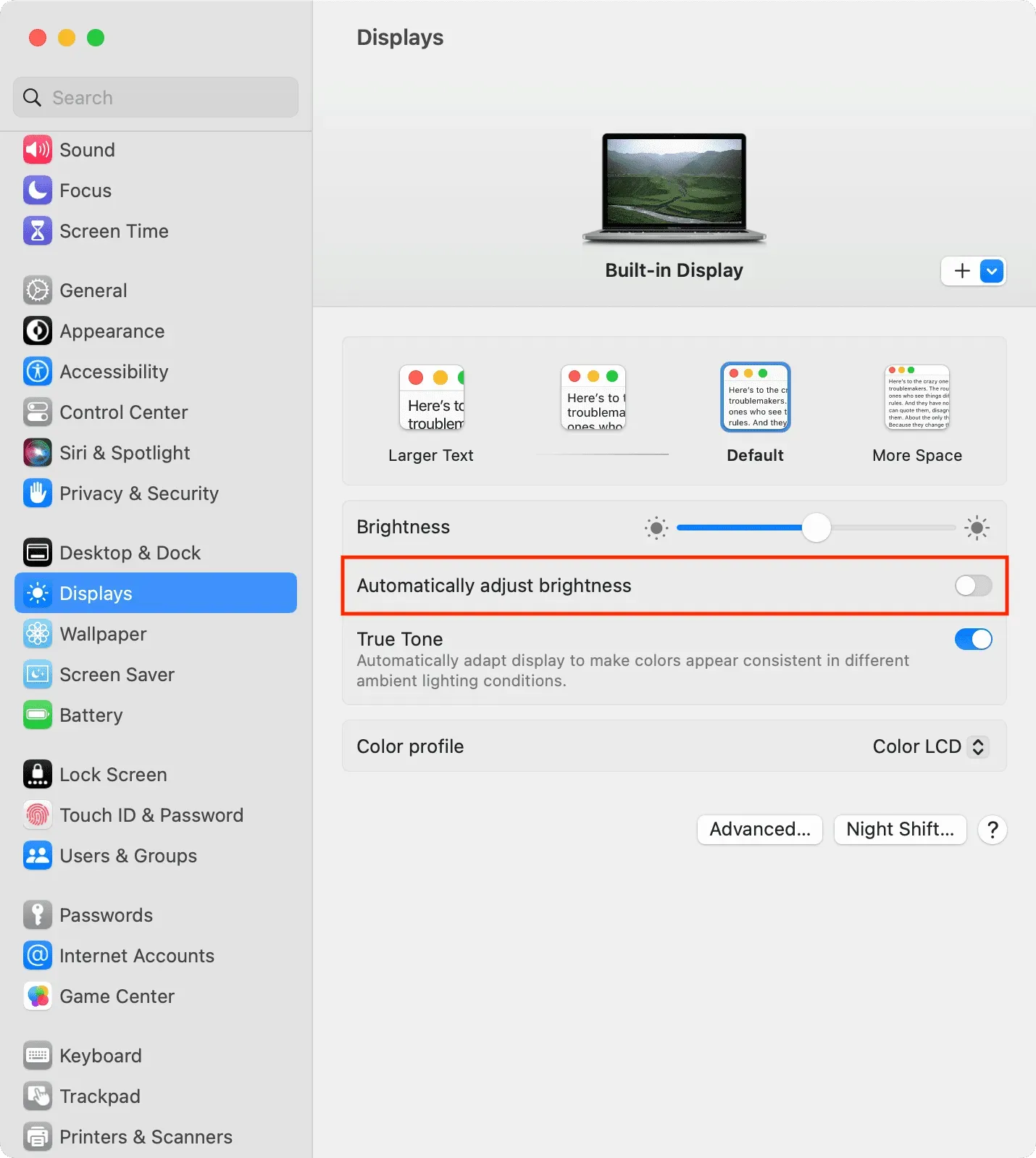
On macOS Monterey and earlier: Go to System Preferences > Displays and uncheck Automatically Adjust Brightness.
Note. You won’t see the option to automatically adjust brightness if your Mac doesn’t have an ambient light sensor. Mac mini, Mac Studio, and Mac Pro fall into this category unless connected to a compatible monitor such as the Apple Studio Display.
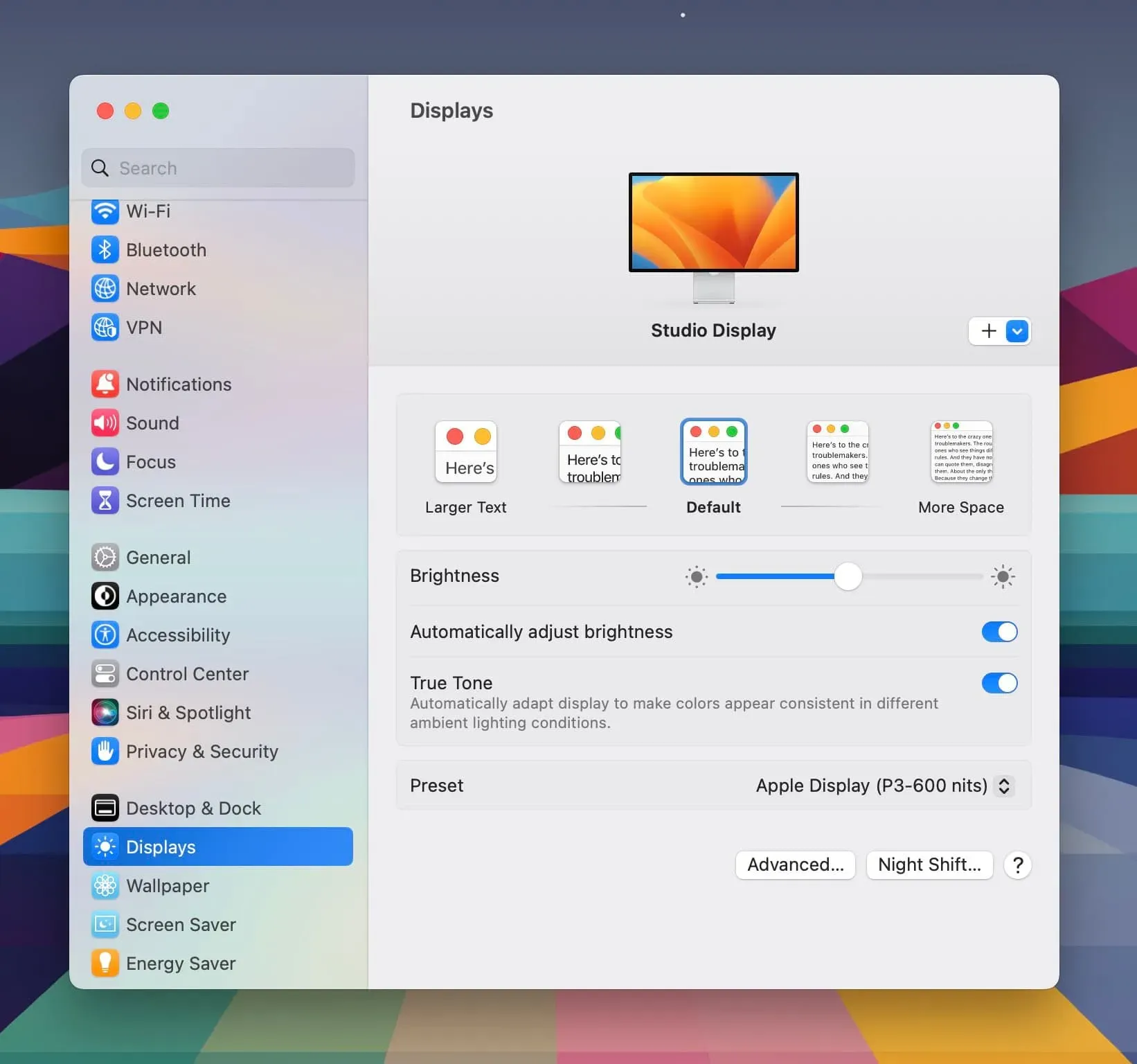
Experiment with True Tone
True Tone automatically makes the screen slightly warmer or cooler depending on the lighting conditions. This should not affect brightness now, but shifting display colors can give the impression that your screen is changing. So, go to System Settings > Displays and see if you prefer a display with True Tone enabled or disabled.
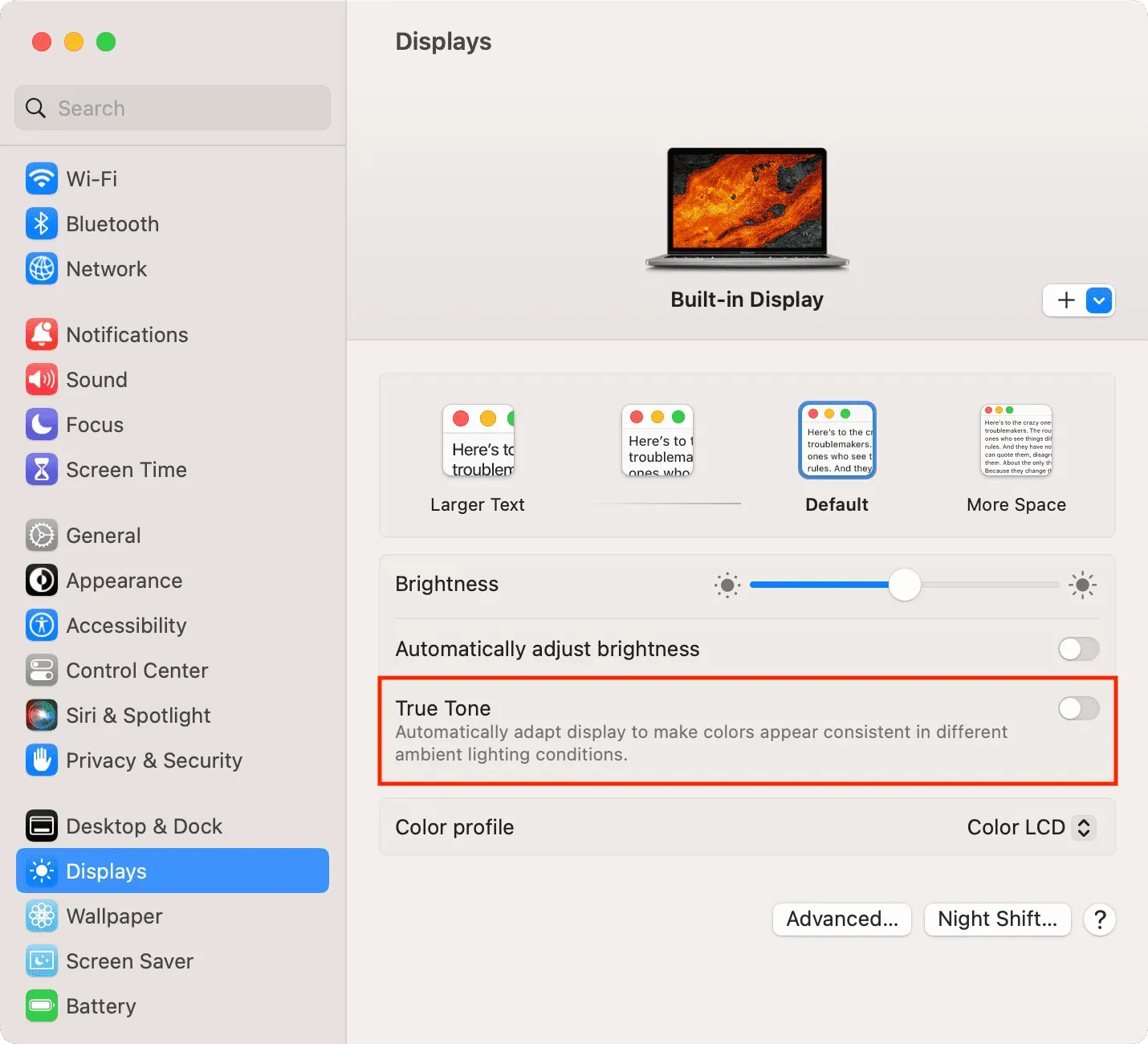
Note. True Tone and HDR are not available on all Macs.
Disable HDR
Your Mac can automatically adjust the display when it’s connected to an HDR display and you’re viewing HDR content. This may result in a change in brightness, as displaying HDR content in the best quality requires a certain level of brightness. However, if you prefer to keep the display’s appearance unchanged, go to System Preferences > Displays and disable High Dynamic Range.
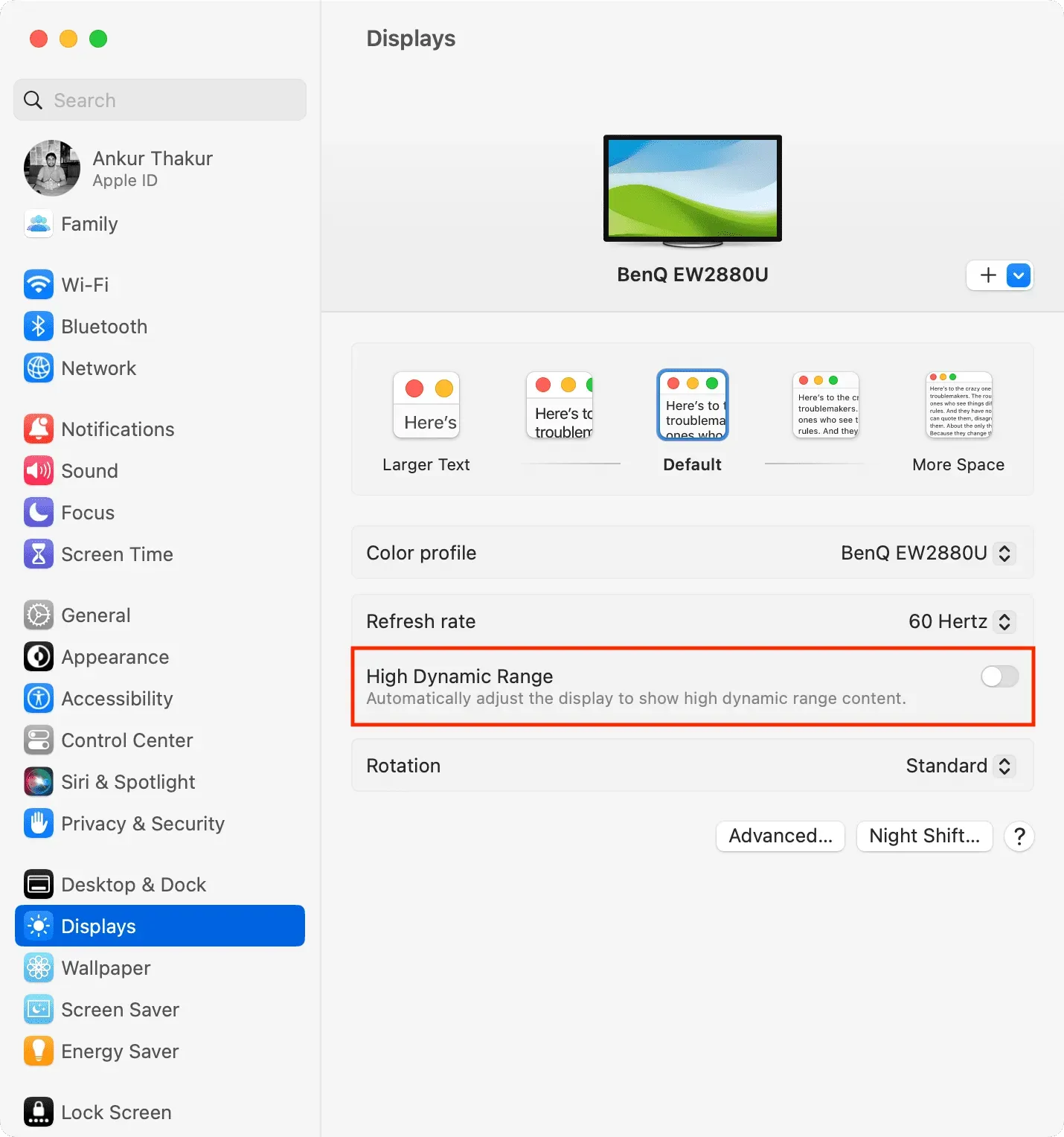
Prevent your MacBook from dimming the screen while on battery power
When you take your Mac laptop off charge, its brightness dims slightly to conserve battery life, but if it interferes with your workflow, you can quickly stop your MacBook from doing so.
Disable Mac Low Power Mode
To improve battery life, your MacBook dims the screen while in power saving mode. But if this results in occasional display issues, you can turn off Low Power Mode in System Preferences > Battery.
Close or uninstall third-party brightness apps
Some people use third-party apps like Lunar or ExternalDisplayBrightness to control the brightness of a built-in or attached Mac monitor. If you are also using one of these and are experiencing brightness issues, consider quitting or uninstalling those apps.
If the problem is fixed, you can be sure that it was caused by these applications.
Are you using an iPad or Mac as a second display?
You may momentarily notice a slight change in screen brightness when you connect or disconnect an iPad or another Mac as a second display. This is fine.
However, you can go to System Settings > Displays > select your primary display and make sure your primary screen’s color profile is the default one or the one you set earlier. This is usually the name of your monitor or LCD color display.
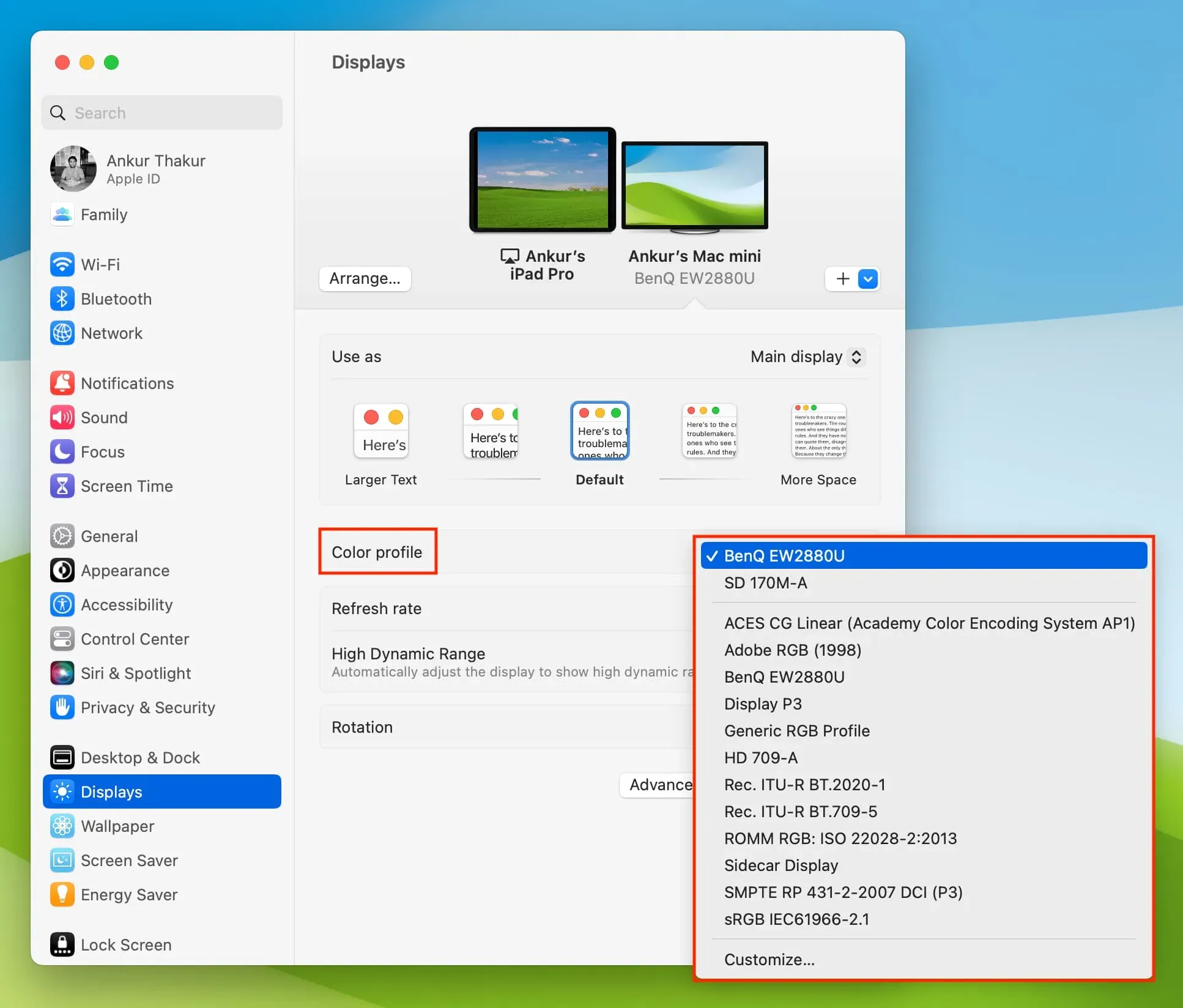
Disable night shift
Night Shift filters blue light from the display. If you’re using it on your Mac, go to System Preferences > Displays > Night Shift and turn it off.
Update your Mac and Display Studio
Update your Mac if it has an outdated version of macOS.
- On macOS Ventura and later: System Preferences > General > Software Update.
- On macOS Monterey and earlier: System Preferences > Software Update.
Apple Studio Display and Pro Display XDR are also receiving updates. So, make sure it has the latest firmware.
Disconnect Studio Display and reconnect it.
If you’re experiencing brightness issues with your Apple Studio Display, unplug it from your Mac and plug it back in. When doing this, make sure that the Thunderbolt cable is not damaged.
Reset non-volatile memory
Mac computers with an Intel processor have an additional tiny memory called NVRAM or PRAM that stores quick system settings such as boot disk selection, time zone, screen resolution, sound settings, etc. If your Mac’s display isn’t working perfectly, reset it NVRAM.
Note. This does not apply if your Mac has Apple silicon (M1, M2 or successors).
Related: How to tell if your Mac has an Apple Silicon or Intel processor
Reset SMC
Resetting the System Management Controller (SMC) is one of the last steps to troubleshoot power-related issues on Intel-based Macs. So, if your Intel Mac’s display is behaving incorrectly, reset its SMC. If you have a Mac with an Apple Silicon processor, just turn off your computer and turn it back on.
Reinstall macOS
If all else fails, reinstall macOS without deleting your data and that should fix the annoying screen brightness issue.
Finally, if you can’t resolve the issue, contact Apple Support and file a repair request with your nearest Apple Service Center to check your Mac or Studio Display hardware.
